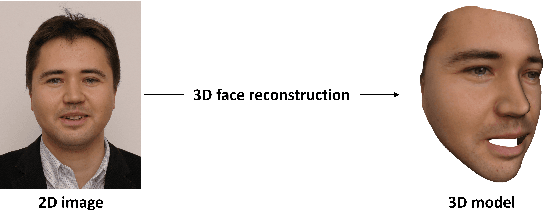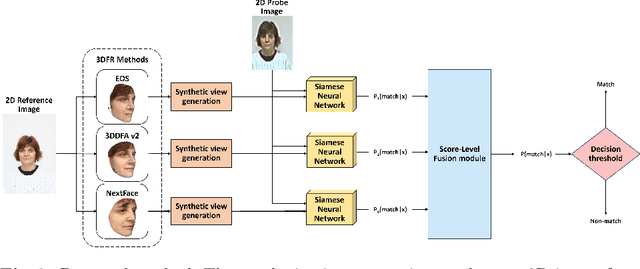Martin Drahansky
Exploring 3D Face Reconstruction and Fusion Methods for Face Verification: A Case-Study in Video Surveillance
Sep 16, 2024



Abstract:3D face reconstruction (3DFR) algorithms are based on specific assumptions tailored to distinct application scenarios. These assumptions limit their use when acquisition conditions, such as the subject's distance from the camera or the camera's characteristics, are different than expected, as typically happens in video surveillance. Additionally, 3DFR algorithms follow various strategies to address the reconstruction of a 3D shape from 2D data, such as statistical model fitting, photometric stereo, or deep learning. In the present study, we explore the application of three 3DFR algorithms representative of the SOTA, employing each one as the template set generator for a face verification system. The scores provided by each system are combined by score-level fusion. We show that the complementarity induced by different 3DFR algorithms improves performance when tests are conducted at never-seen-before distances from the camera and camera characteristics (cross-distance and cross-camera settings), thus encouraging further investigations on multiple 3DFR-based approaches.
3D Face Reconstruction: the Road to Forensics
Sep 20, 2023



Abstract:3D face reconstruction algorithms from images and videos are applied to many fields, from plastic surgery to the entertainment sector, thanks to their advantageous features. However, when looking at forensic applications, 3D face reconstruction must observe strict requirements that still make its possible role in bringing evidence to a lawsuit unclear. An extensive investigation of the constraints, potential, and limits of its application in forensics is still missing. Shedding some light on this matter is the goal of the present survey, which starts by clarifying the relation between forensic applications and biometrics, with a focus on face recognition. Therefore, it provides an analysis of the achievements of 3D face reconstruction algorithms from surveillance videos and mugshot images and discusses the current obstacles that separate 3D face reconstruction from an active role in forensic applications. Finally, it examines the underlying data sets, with their advantages and limitations, while proposing alternatives that could substitute or complement them.
 Add to Chrome
Add to Chrome Add to Firefox
Add to Firefox Add to Edge
Add to Edge